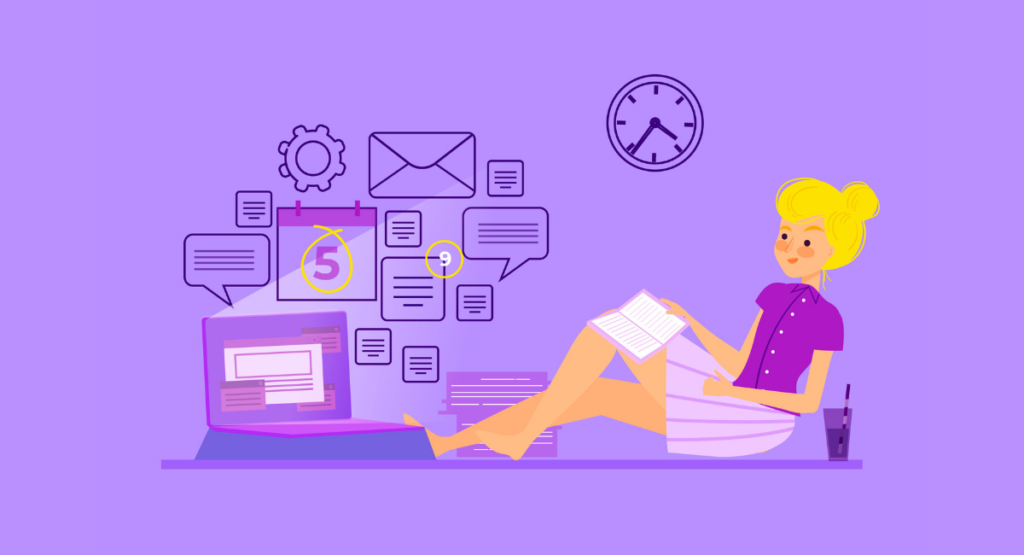Understanding screen resolution is super important to enjoy what you're watching on various devices like phones, tablets, computer screens, & TVs. The sharpness of words and pictures on your screen depends on screen resolution.
This sharpness is determined by the number of dots in width and height on the display, like 1920 x 1080. Today, we'll cover screen resolutions, how to check your device's resolution, and adjust screen settings for better visuals.
This knowledge is useful for both enhancing your personal device usage and in professional settings where optimal display quality is crucial.
Understanding Common Screen Resolutions

Definition of screen resolution
Screen resolution is the total number of pixels on the screen, expressed as width x height. Pixels usually refer to little dots of color that together form the image you see on your screen.
For example, a resolution of 1920 x 1080 indicates 1920 horizontal pixels and 1080 vertical pixels. Your image will appear crisper and more detailed the more you have.
Aspect ratio, which determines the width and height of the screen depending on all the pixels, is another factor that is influenced by resolution in addition to image clarity.Importance of knowing different screen resolutions
Importance of knowing different screen resolutions
Understanding different screen resolutions is crucial for multiple reasons:
- Compatibility: Ensuring content or software displays correctly across various devices, important for developers and designers.
- Media Consumption: Knowing the ideal resolutions for media consumption can significantly enhance your viewing experience.
- Performance: Higher resolutions require more power and processing from your computer, affecting overall performance.
- Purchase Decisions: When buying a new display or device, understanding resolutions will guide you to make a more informed choice based on your needs.
By familiarizing yourself with different resolution standards, you can tailor your digital environment for optimal usage depending on whether the focus is productivity, entertainment, or content creation.
1920 x 1080 (Full HD)
1920 x 1080, also called Full HD, 1080p, or FHD This resolution is super common nowadays. It gives you awesome detail and clarity, perfect for everyday tasks, gaming, and watching HD videos.
The 16:9 aspect ratio it offers has become the norm for TV shows, streaming platforms, and lots of games. Full HD works great for all sorts of media and applications - it's like a jack-of-all-trades.
You can find devices with FHD screens everywhere, from affordable options to more luxurious ones. There's something out there for everyone!
1366 x 768 (HD)
1366 x 768, also called HD or 768p, is a lower resolution used in budget laptops and small TVs. It's easier on the graphics power, making it great for basic computers.
The 16:9 ratio stays the same as higher resolutions, so videos and websites still look good even if not sharp as Full HD.
1280 x 800 (WXGA)
1280 x 800 pixels, known as WXGA, is found in tablets, small laptops, and portable monitors. It has a 16:10 ratio, giving a slightly different view with more vertical space than the common 16:9.
This additional space can be particularly useful for reading or document editing as it shows more of the page vertically, reducing the need to scroll.
WXGA stands as a middle ground, providing decent resolution for everyday tasks while being gentle on battery life, making it suitable for mobile users who need efficiency over ultra-high-definition.
Testing Screen Resolutions

Why test different resolutions?
Hey there! Trying out various screen resolutions is super important for a bunch of reasons, especially to make sure digital stuff is easy to access and shows up right on different gadgets.
The resolution of a screen impacts how much stuff and detail you can see on it. If don't test it, things might look weird words could be hard to read, and everyone's experience might not be great.
For folks who create websites or apps, knowing how their stuff looks on various resolutions helps make sure it works for everyone. And for regular folks, testing resolutions on their devices can make things easier to use and more fun to look at.
H4: Tools for testing resolutions
Various tools are available to help test and simulate different screen resolutions. Here are a few popular options:
1. Online resources such as Screenfly and Responsinator: These allow you to preview how a website will appear across various devices, including computers, tablets, and phones, without actually having to use them all.
2. Developer Tools for Browsers: The majority of contemporary web browsers, including Firefox, Safari, and Google Chrome, have developer tools that can adjust to multiple screen sizes and resolutions.
3. Standalone applications like DisplayFusion or MultiRes: These programs offer advanced features like setting different resolutions on multiple monitors simultaneously and more detailed customization options.
Optimizing Display Settings for Different Devices
Adjusting resolution on Windows
Windows users can adjust their screen resolution through a few simple steps, which can significantly enhance the viewing quality depending on the monitor or screen used. To change the resolution:
1. Right-click on the desktop and select "Display settings."
2. Scroll down to "Scale and layout."
3. In the "Display resolution" dropdown, select the resolution that suits your needs best.
It's advisable to choose the resolution that's marked as "(Recommended)" because it matches the native resolution of your screen, providing optimal clarity and the most accurate colors.
Adjusting name resolution on macOS
MacOS also provides a seamless way to change screen resolutions, with a focus on clarity and optimizing visual settings. To adjust the resolution on a Mac:
1. Click on the Apple menu and select "System Preferences."
2. Go to "Displays".
3. Under the "Display" tab, you will find a scaled option that allows you to choose from a variety of resolutions for your screen.
Mac users can choose between default looks such as "Larger Text" or "More Space," which adjusts the screen's rendering to either increase readability or display more information respectively.
Responsive design for mobile devices
Designing for mobile devices requires a focus on responsive design, a method where the site or app's layout adapults dynamically to varying screen sizes and resolutions. Key principles include:
- Using flexible, grid-based layouts that adjust to different screen sizes.
- Incorporating media queries in CSS to apply different styles based on the device's characteristics.
- Ensuring touch-friendly interfaces with easily clickable elements and readable fonts.
Responsive design implementation not only boosts user experience on mobile gadgets but also aids in improving SEO performance. This is achieved by aligning with mobile-first indexing standards set by search engines.
By fine-tuning display configurations and adjusting content according to the device, businesses and developers can guarantee that their offerings are easily accessible and visually appealing to a wider audience.
Book a Demo and experience ContextQA testing platform in action with a complimentary, no-obligation session tailored to your business needs.
Conclusion
In conclusion, grasping screen resolutions is crucial for optimizing display settings and enriching visual experience across various devices.
Whether you're a web developer, graphic designer, or simply someone who appreciates sharp, legible images and text, understanding how to test and tweak your screen resolution can significantly enhance the viewing of content.
Always keep in mind to select the resolution that suits your specific requirements best and regularly ensure that your settings are tailored for your current tasks.
Through proactive management of display settings, you can ensure optimal visual representation, irrespective of the device in use.
Also Read - What is CSS & Media Query Breakpoints?
